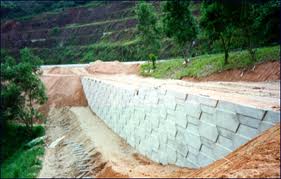Order : ARTIODACTYLA
Family : Suidae
Species : Sus scrofa
Head-Body Length : Males up to 1.5 metres
Height : Males up to 0.8 metres
Tail Length : Males up to 300 cm
Weight : Males up to 200 kg, females are smaller
Wild Boar / Eurasian Wild Pig
If you live in a residential community that borders along Taman Negeri Selangor, there is a good chance you have seen a Wild Boar or Eurasian Wild Pig coming out of the forest to forage in grassy areas of your neighborhood in the late evening.
The Eurasian Wild Pig inhabits primary and secondary forest, but, as mentioned above, it will also forage in adjacent cleared or agricultural areas. In parts of Peninsular Malaysia and Singapore the species occurs in mangroves. It is found within Taman Negeri Selangor.
The Eurasian Wild Pig has one of the widest geographic distributions of all terrestrial mammals, and this range has been greatly expanded by human agency. The species now occurs in pure wild or barely modified feral form on all continents excepting Antarctica, and on many oceanic islands.
Eurasian Wild Pigs are generally to be found in groups of up to 20, though adult males are often solitary. Adults are dark grey to black, and juveniles brownish with distinctive horizontal stripes. Wild pigs are prolific breeders and apparently breed throughout the year.
They are omnivorous, living on crops, roots, tubers, fruits and carrion. Other items commonly consumed by these pigs included soil, earthworms, roots and other vegetable matter and in mangrove areas, molluscs, crabs and other arthropods and even fishes. They also enjoy domestic crops, and no animal is more destructive to crops than pigs.
The Wild Pig is the ancestor of most (but not all) ancient and modern domestic pig breeds, and there is evidence to suggest that it was independently domesticated in several different parts of its range, including Southeast Asia. The Eurasian Wild Pig, however, is greater size than its domesticated cousins. And has a mane of bristly hairs extending along the back. The mane becomes erect when the animal is feeling threatened.
The Eurasian Wild Pig is a chief food source for tigers and leopards. It is also a popular food item among humans. The wild pig has constituted a primary resource of subsistence hunters since the earliest times, and it remains one of the most popular targets for recreational hunting wherever it remains sufficiently abundant.
Over-hunting and changes in land use have resulted in the fragmentation of its range and its extermination throughout the British Isles, Scandinavia, parts of North Africa, and relatively extensive parts of its range in the former Soviet Union. and northern Japan.
Nevertheless, the species remains widely distributed and is often locally abundant within the Peninsular and within the Park. As a result of its depredations on crops it is regarded as a pest in many countries.
In the IUCN Red List of Threatened Species, the Eurasian Wild Pig is categorized as “Least Concern” due to its wide range, abundance, tolerance to habitat disturbance, and presence in many protected areas. Here in Malaysia, the wild pig is listed in the First Schedule, Part I, as a hunted Species, of the Wildlife Conservation Action 2010. This means it is a “protected wildlife” but it can be hunted with a license.
Despite its abundance, it can be an exciting treat to see a group of wild pigs coming out of the forest in the evenings, to forage in along the grassy roadside, especially when there are young babies in the group – provided you are seeing them from the safety of your car!
Read more at (all information extracted from these sites):
Ecology Asia:
The IUCN Red List of Threatened Species:
Department of Wildlife and National Parks Malaysia
Wild Pigs:






























